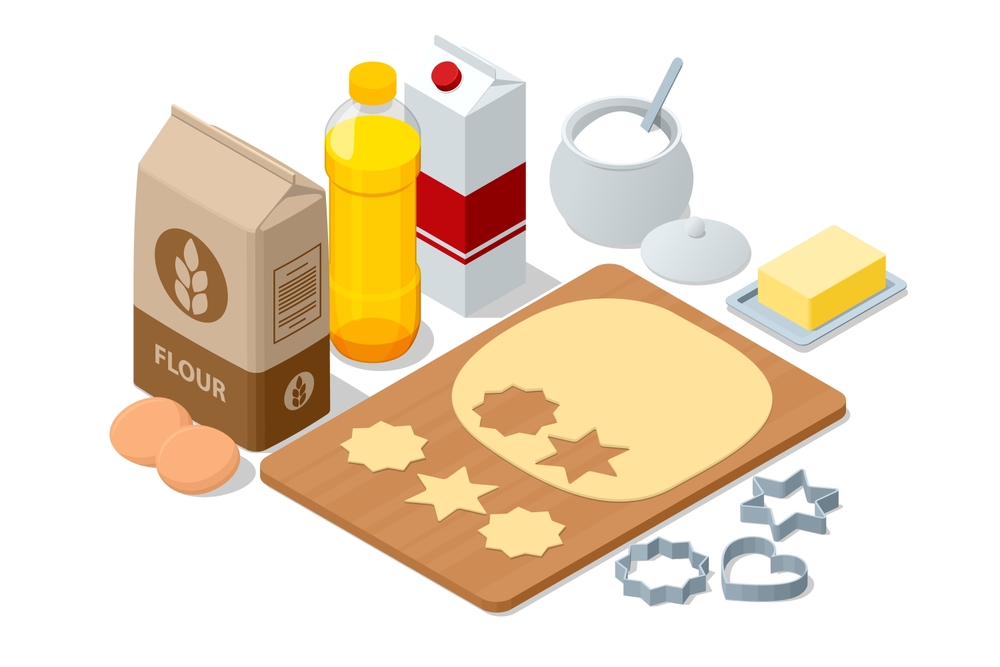Every home baker knows the frustration of reaching for flour or sugar, only to find it’s lost its pristine quality. What if we told you that the key to maintaining your baking ingredients’ freshness isn’t some mysterious culinary secret, but a simple set of storage techniques anyone can master?
In this comprehensive guide, we’ll dive deep into the art and science of storing flour and sugar. You’ll learn how to preserve these pantry staples, extend their shelf life, and ensure every recipe you create starts with the highest-quality ingredients possible.
Understanding Flour Storage
Types of Flour and Their Unique Storage Needs
Each flour type requires a slightly different approach to storage:
1. All-Purpose Flour
- Most versatile
- Moderate shelf life
- Relatively stable storage requirements
2. Whole Wheat Flour
- Higher oil content
- More prone to rancidity
- Requires more careful storage
- Shorter shelf life compared to refined flours
3. Specialty Flours
- Gluten-free flours
- Nut-based flours (almond, coconut)
- Often more sensitive to environmental conditions
- Require extra attention to storage methods
Critical Factors Affecting Flour Quality
Moisture Management
Moisture is flour’s worst enemy. Even slight humidity can lead to:
- Clumping
- Mold growth
- Reduced shelf life
- Potential bacterial contamination
Temperature Control
- Ideal storage temperature: 60-70°F (15-21°C)
- Avoid temperature fluctuations
- Keep away from heat sources like stoves or direct sunlight
Light Exposure
UV rays can degrade flour’s quality:
- Store in opaque containers
- Choose dark, cool storage spaces
- Prevent direct sunlight exposure
Best Practices for Flour Storage
Choosing the Right Container
Ideal Characteristics:
- Airtight seal
- Food-grade material
- Moisture-resistant
- Opaque or stored in dark location
Container Material Comparison:
- Glass
- Pros: Non-porous, easy to clean
- Cons: Breakable, allows light penetration
- Plastic
- Pros: Lightweight, affordable
- Cons: Can retain odors, potential chemical leaching
- Metal Containers
- Pros: Durable, blocks light
- Cons: Can potentially affect taste if low quality
Storage Location Strategies
- Pantry: Best for short-term storage
- Refrigerator: Extends shelf life for whole wheat and specialty flours
- Freezer: Ideal for long-term preservation (up to 1 year)
Flour Shelf Life and Freshness Indicators
Shelf Life Estimates:
- All-Purpose Flour: 6-8 months
- Whole Wheat Flour: 1-3 months
- Specialty Flours: Varies (check packaging)
Signs of Spoilage:
- Unusual odor (rancid or musty)
- Visible mold
- Discoloration
- Insect presence
- Clumpy texture
Sugar Storage: Preserving Sweetness and Quality
Types of Sugar and Their Storage Nuances
1. Granulated Sugar
- Most stable
- Longest shelf life
- Least demanding storage requirements
2. Brown Sugar
- High moisture content
- Prone to hardening
- Requires specific storage techniques
3. Powdered Sugar
- Contains cornstarch
- Sensitive to moisture
- Requires careful sealing
Preventing Common Sugar Storage Challenges
Top Storage Enemies:
- Moisture
- Heat
- Air exposure
- Contamination
Prevention Strategies:
- Use airtight containers
- Store in cool, dry places
- Avoid temperature fluctuations
- Keep away from strong odors
Advanced Sugar Storage Techniques
Container Selection
- Ceramic containers with tight lids
- Glass jars with rubber seals
- Plastic containers with clip-lock mechanisms
Environmental Considerations
- Ideal temperature: 50-70°F (10-21°C)
- Humidity level: Below 50%
- Avoid kitchen areas near stoves or dishwashers
Troubleshooting and Expert Tips
Reviving Hardened Sugar
Softening Techniques:
- Microwave method
- Place sugar in microwave-safe bowl
- Cover with damp paper towel
- Heat in 10-second intervals
- Bread slice method
- Place a slice of bread in container
- Seal overnight
- Bread’s moisture will soften sugar
Rescuing Compromised Flour
- Sift to remove potential contaminants
- When in doubt, discard
- Prevention is always better than cure
Professional Recommendations
Expert Baker’s Advice:
- Label containers with purchase dates
- Rotate stock regularly
- Invest in quality storage solutions
- Monitor storage conditions periodically
Conclusion: Your Path to Ingredient Perfection
Proper flour and sugar storage isn’t just about preservation—it’s about ensuring the quality of every dish you create. By implementing these strategies, you’ll extend your ingredients’ shelf life, maintain their flavor, and elevate your baking game.
Have a unique storage tip? Experienced a storage challenge? Share your story in the comments below! Let’s learn from each other and become storage masters together.
Bonus: Quick Storage Cheat Sheet
| Ingredient | Ideal Temperature | Ideal Humidity | Recommended Storage Duration |
|---|---|---|---|
| All-Purpose Flour | 60-70°F | Below 50% | 6-8 months |
| Whole Wheat Flour | 40-50°F | Below 50% | 1-3 months |
| Granulated Sugar | 50-70°F | Below 50% | Indefinite |
| Brown Sugar | 50-70°F | Below 50% | 6-12 months |
Remember: These are guidelines. Always check for signs of spoilage!

